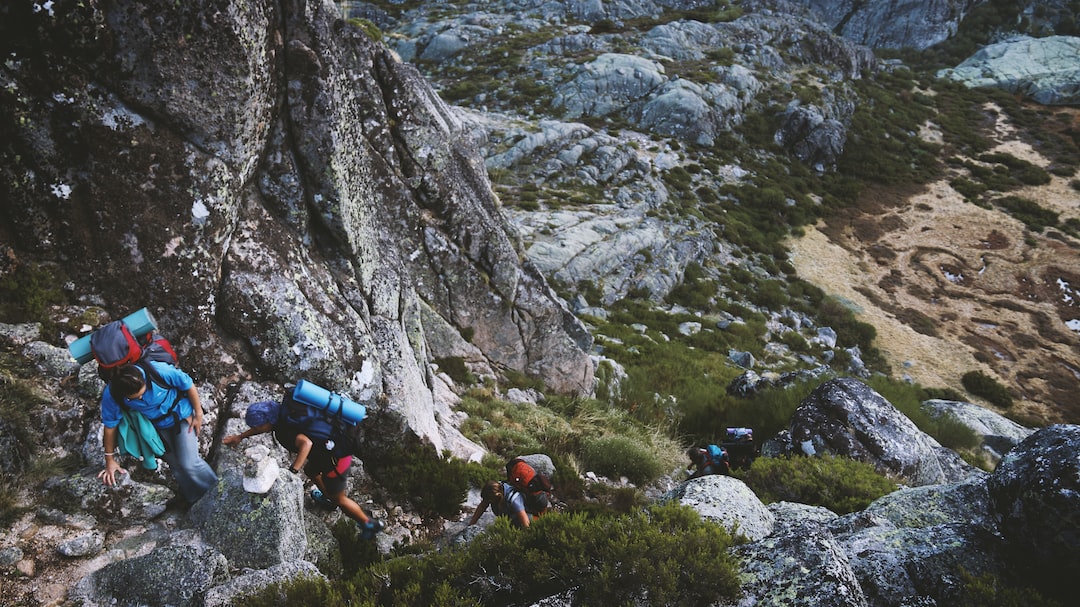
“A flashlight for backpacking illuminates not only the path ahead, but also the memories created on the journey.”
Shedding Light on Backpacking: Essential Flashlight Tips
Backpacking is an exciting and challenging outdoor activity that requires careful preparation and planning. It involves carrying all the necessary gear and equipment, including a reliable and functional flashlight. A flashlight for backpacking is not just any ordinary flashlight. It must be durable, efficient, and lightweight. It should also be able to provide sufficient illumination to help you navigate through the dark, the thick forest, or the rugged terrain. In this article, we will shed light on the essential flashlight tips for backpacking, from choosing the right flashlight to using it properly.
Choosing the Right Flashlight for Backpacking
When it comes to choosing the right flashlight for backpacking, there are several factors that you need to consider. These include the following:
Brightness
The brightness of a flashlight is measured in lumens. A good backpacking flashlight should have at least 200 lumens of brightness, preferably 500 lumens or more. This will provide sufficient illumination for trail finding, map reading, and signaling.
Battery Life
Battery life is an important factor to consider when choosing a backpacking flashlight. You want a flashlight that will last throughout your backpacking trip without needing to be recharged or have its batteries replaced. LED flashlights are known for their long battery life, which can last anywhere from 10 to 100 hours depending on the brightness setting.
Durability
A backpacking flashlight should be durable enough to withstand the rigors of the outdoors. It should be waterproof, shockproof, and rugged enough to survive accidental drops or impacts.
Weight
The weight of a flashlight is also an important factor to consider when backpacking. You want a flashlight that is lightweight and compact enough to fit in your backpack without adding unnecessary weight. A good backpacking flashlight should weigh no more than 8 ounces.
Ease of Use
A backpacking flashlight should be easy to use, with simple controls and settings. You don’t want to waste time fumbling with complex settings or difficult-to-use buttons.
Flashlight for Backpacking: Types and Features
There are several types of flashlights that are suitable for backpacking. These include:
Handheld Flashlights
Handheld flashlights are the most common type of flashlight for backpacking. They are easy to use and can be carried in your backpack or clipped to your belt or pocket. Handheld flashlights come in various sizes, shapes, and brightness levels.
Headlamps
Headlamps are another type of flashlight that is popular among backpackers. They are worn on the head, leaving your hands free to do other tasks. Headlamps are lightweight and provide a wide beam of light.
Lanterns
Lanterns are larger and heavier than handheld flashlights and headlamps but can provide more illumination. They are suitable for base camps or car camping but may not be practical for backpacking due to their size and weight.
Other features to consider when choosing a flashlight for backpacking include:
Multiple brightness levels
A flashlight with multiple brightness levels allows you to adjust the brightness according to your needs, conserving battery life.
Red lights
Some flashlights have red lights that can help preserve your night vision and reduce eye strain.
SOS mode
An SOS mode can be useful in case of emergency, allowing you to signal for help.

Using a Flashlight for Backpacking
Using a flashlight for backpacking requires some skill and knowledge. Here are some tips on how to use a flashlight effectively:
Hold the flashlight properly
Hold the flashlight with a firm grip to prevent it from slipping or falling. Use a grip that is comfortable for you.
Choose the right brightness level
Choose the appropriate brightness level for the task at hand. Use a higher brightness level for trail finding or map reading and a lower brightness level for reading in your tent or signaling.
Preserve battery life
To conserve battery life, turn off the flashlight when not in use or use the lowest brightness level possible.
Store the flashlight properly
Store the flashlight in a dry place away from moisture and extreme temperatures. Remove the batteries if not using the flashlight for an extended period.
Conclusion: Shedding Light on Backpacking
A reliable and functional flashlight is an essential piece of gear for backpacking. Choosing the right flashlight for backpacking requires considering several factors, including brightness, battery life, durability, weight, and ease of use. There are several types of flashlights suitable for backpacking, including handheld flashlights, headlamps, and lanterns. Using a flashlight for backpacking requires holding it properly, choosing the right brightness level, preserving battery life, and storing it properly. With these essential flashlight tips, you can enjoy backpacking even in the dark.
Bonus Tip: Flashlight for Backpacking Safety
When you’re out in the wilderness, safety should always be your top priority. One way to stay safe while backpacking is to use your flashlight wisely. Here are some safety tips for using a flashlight for backpacking:
Avoid shining the flashlight directly into another person’s eyes, as it can cause temporary blindness.
Be mindful of wildlife, especially nocturnal animals like bears and cougars. Use a brighter setting to deter them from approaching.
Use your flashlight to signal for help in case of an emergency, by flashing it in a pattern of three short and three long bursts.
By following these safety tips, you can make sure that your flashlight for backpacking is not just a tool for illumination, but also a tool for safety.

Frequently asked questions
What factors should be considered when choosing a flashlight for backpacking?
When choosing a flashlight for backpacking, several factors need to be considered, including brightness, battery life, durability, weight, and ease of use. A good backpacking flashlight should have at least 200 lumens of brightness, preferably 500 or more, and LED flashlights are known for their long battery life. It should be durable enough to survive accidental drops or impacts, waterproof, and shockproof. The flashlight should weigh no more than 8 ounces and should have simple settings and controls for ease of use.
What are the types of flashlights suitable for backpacking?
There are several types of flashlights suitable for backpacking, including handheld flashlights, headlamps, and lanterns. Handheld flashlights are the most common type of flashlight, easy to use and carry in a backpack or clipped to a belt or pocket. Headlamps are worn on the head, providing a wide beam of light and leaving hands free to do other tasks. Lanterns are larger and heavier, suitable for base camps or car camping but not practical for backpacking due to their size and weight.
How should a flashlight be used for backpacking?
Using a flashlight for backpacking requires some skill and knowledge. To use a flashlight effectively, it should be held with a firm grip and choose the appropriate brightness level for the task at hand. Use higher brightness levels for trail finding or map reading and lower brightness levels for reading in a tent or signaling. To conserve battery life, turn off the flashlight when not in use or use the lowest brightness level possible. Store the flashlight in a dry place away from moisture and extreme temperatures and remove the batteries if not using the flashlight for an extended period.
What safety tips should be considered when using a flashlight for backpacking?
Safety should always be a top priority when backpacking. One way to stay safe is to use a flashlight wisely. Avoid shining the flashlight directly into someone’s eyes as it can cause temporary blindness. Be mindful of wildlife, especially nocturnal animals like bears and cougars, and use a brighter setting to deter them from approaching. Use the flashlight to signal for help in case of an emergency by flashing it in a pattern of three short and three long bursts.
What should be done if a backpacking flashlight breaks?
If a backpacking flashlight breaks, it is essential to have a backup. Always carry spare batteries or an extra flashlight in case of an emergency. If the flashlight becomes damaged or unusable, store it in a safe place and dispose of the batteries properly. If possible, replace the flashlight before embarking on another backpacking trip.
